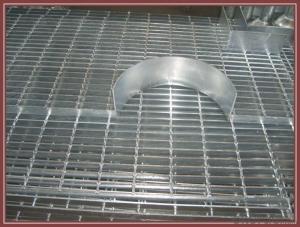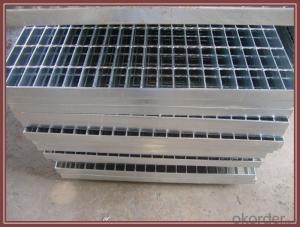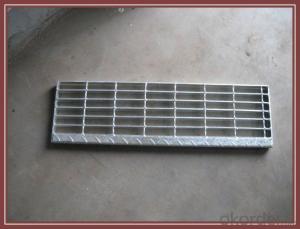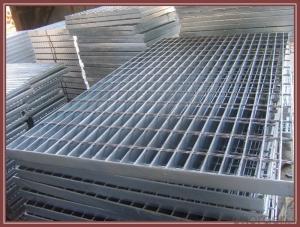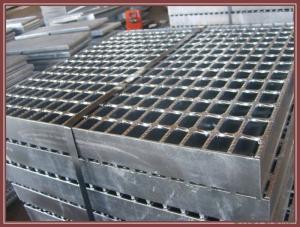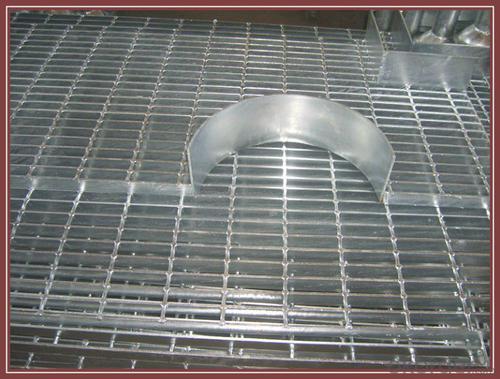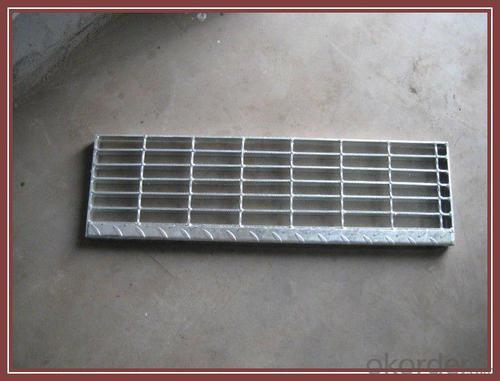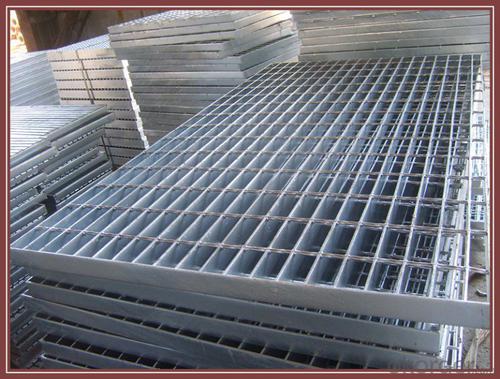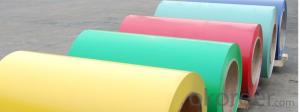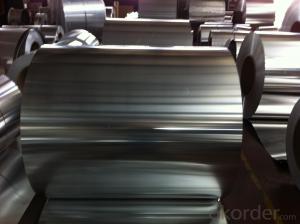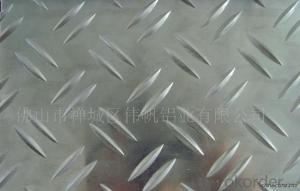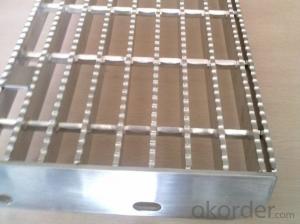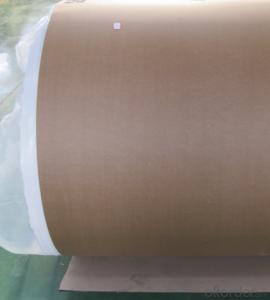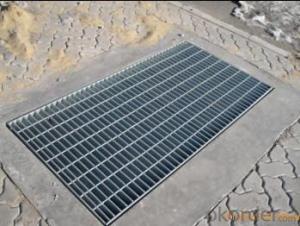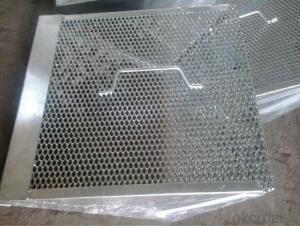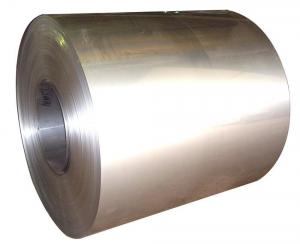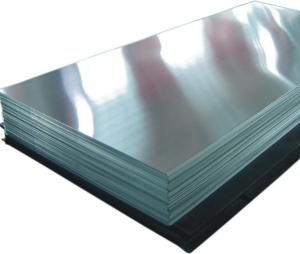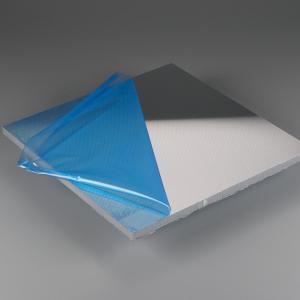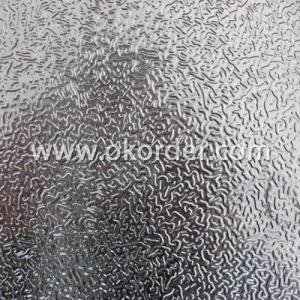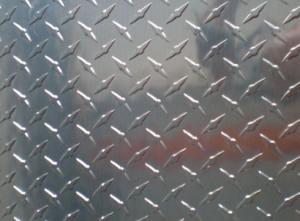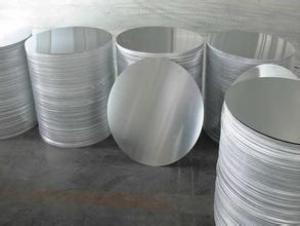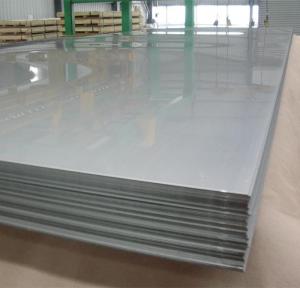Aluminum Alloy Road Grating Drainage Trench Cover & Manhole Cover - Weight of Aluminum Roofing Sheets
- Loading Port:
- Qingdao
- Payment Terms:
- TT OR LC
- Min Order Qty:
- 5000 pc
- Supply Capability:
- 6000000 pc/month
OKorder Service Pledge
OKorder Financial Service
You Might Also Like
1.Description of Drainage trench cover:
Drainage trench cover is widely used in the urban road, the square, the botanical garden, the wharf, the airport, the parking lot, the road, each kind of industry, the civil project, etc.
2.Main features of Drainage trench cover:
I--Carrying 20 tons of weight
II—Carrying 14 tons of weight
III---carrying 6 tons of weight
IV---carrying 2 tons of weight
V---Carrying pedestrian weight
3.Glass Wool Blanket Images:
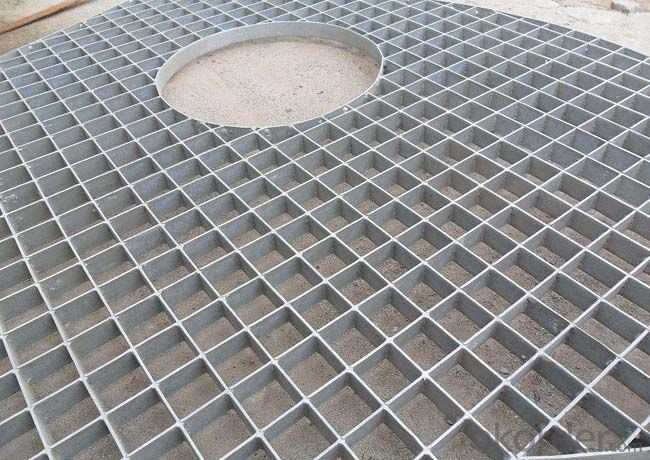
4. Drainage Trench Cover Technical Parameters:
These drain cover plate applies to the road cross-sectional and longitudinal drain. The drains width ranging from 200mm to 550mm.
A means the steel grating length
H means the steel grating height
A means the frame length
H means the frame height
5.FAQ
We have organized several common questions for our clients,may help you sincerely:
①How about your company?
A world class manufacturer & supplier of Drainage trench cover is
one of the large scale professional investment casting production bases in China,consisting of both casting foundry forging and machining factory. Annually more than 8000 tons Precision casting and forging parts are exported to markets in Europe,America and Japan. OEM casting and forging service available according to customer’s requirement.
②How to guarantee the quality of the products?
We have established the international advanced quality management system every link from raw material to final product we have strict quality test; We resolutely put an end to unqualified products flowing into the market. At the same time, we will provide necessary follow-up service assurance.
- Q: This question asks for the cost of an aluminum sheet.
- <p>The cost of aluminum sheets can vary significantly based on factors such as thickness, grade, surface finish, and market conditions. As of my last update, the price range for aluminum sheets could be anywhere from $0.50 to $5 per pound, but this is subject to change. For the most accurate and current pricing, it's best to check with suppliers or on metal exchange platforms, as prices can fluctuate daily. Always consider the specific requirements of your project to determine the exact type and grade of aluminum needed, which will also affect the cost.</p>
- Q: This question asks for a comparison of the positive and negative aspects of utilizing aluminum sheets in various applications.
- <p>Advantages of using aluminum sheets include their lightweight nature, which reduces transportation and handling costs. They are also corrosion-resistant, making them suitable for outdoor applications. Aluminum sheets are recyclable and environmentally friendly, with a high recycled content rate. They are also easy to fabricate and can be cut, bent, and shaped into various forms. Disadvantages include lower strength compared to steel, which may require thicker sheets for certain applications. They can also be more expensive than some other materials, and their light reflection can sometimes be a concern in certain environments.</p>
- Q: What are the different surface finishes for aluminum sheets in the automotive industry?
- Aluminum sheets in the automotive industry have a variety of surface finishes available. These finishes are applied to enhance the appearance, durability, and corrosion resistance of the sheets. Common surface finishes for aluminum sheets in the automotive industry include: 1. Mill Finish: This is the most basic finish for aluminum sheets. It is achieved by extruding the aluminum and passing it through a rolling mill. Mill finish aluminum sheets have a smooth, shiny surface but may have slight imperfections or scratches. 2. Brushed Finish: Also known as satin finish, this texture is created by brushing the surface with abrasive materials. It gives the aluminum a unique grain pattern and a slightly matte appearance. 3. Anodized Finish: Anodizing is an electrochemical process that forms a protective oxide layer on the surface of the aluminum sheet. Anodized aluminum sheets are highly resistant to corrosion and wear. They can be dyed in various colors, offering a decorative and vibrant finish. 4. Polished Finish: Polished aluminum sheets have a reflective, mirror-like surface achieved through mechanical polishing or chemical processes. This finish is often used for decorative purposes, providing a high-end, glossy appearance. 5. Textured Finish: Textured aluminum sheets have a pattern or texture embossed onto the surface. This finish is commonly used for aesthetic purposes, adding visual interest and helping to conceal scratches or imperfections. 6. Painted Finish: Aluminum sheets can be painted to provide extra protection and improve aesthetics. Painted finishes can be customized to match the desired color or design scheme of the automotive industry. This finish offers excellent corrosion resistance and durability. The choice of surface finish for aluminum sheets in the automotive industry depends on the specific application, desired appearance, and functional requirements. Each finish has its own advantages and contributes to the overall performance and visual appeal of automotive parts or components.
- Q: I need to find 3 elements for my science hw tonight. I was wondering if aluminum foil is a pure element. And also I was wondering if anyone had any ideas of what is a pure element (not a compound or an alloy). Thanks!!!!
- Aluminum Foil is about 80 - 85% pure aluminum. But most aluminum foil products have been laminated with other substances for strength, looks etc. Aluminum Foil is close to being a Pure element. A Pure Element is a substance with only one type of particles in it. Anything on the Periodic Table of Elements, is a Pure Element. eg. Tin, Oxygen, Gold. A Compound is like H20, it is the product of a synthesis reaction. A Compound is a pure Substance but not a Pure Element An Alloy is a Solid Solution of 2 or more metallic compounds or elements. An alloy is a Homogeneous mixture. Not a Pure Element. Hope this helps.
- Q: the coil is wrapped around the aluminium pipe will it effect the efficiency of the coil gun ?
- I think it will make it totally non-functional. Since the aluminum pipe will act like a shorted turn and aluminum happens to be a very good conductor, the pipe will absorb most of the flux produced by the coils and turn it into electric current and heat. With the result being almost no flux gets to the projectile. So if you consider going from 90% to 0.05% a significant effect on efficiency, then yes. The pipe must be made out of a non-conductive material. Or at the very least, it needs to be cut so there is no complete path for current around it's radius.
- Q: Are 101 aluminum sheets suitable for outdoor signage?
- Yes, 101 aluminum sheets are suitable for outdoor signage. They are corrosion-resistant, durable, and can withstand various weather conditions, making them a suitable choice for outdoor applications.
- Q: We just bought a house with aluminum wiring and we knew about it in the inspection report, but everyone kept telling us it's no big deal. There was so much going on and I didn't look into it myself and now I just surfed the web on it and I am filled with anxiety! Please help! Did we make a huge mistake? How common are the dangers? Also, my insurance company didn't ask me about wiring, but some sites said that they don't cover aluminum wiring. Should I ask them? I am so overwhelmed and scared. I do not want a fire for my family!
- you will need to speak to an electrician, but the last i heard the wiring is not the problem, the problem is using things like outlets that are not rated for aluminum. copper in the outlet heats up where it joins the house wiring, and the house burns down. when aluminum first came out, some moron forgot to test for that, so there were a lot of a fires. people have mistakenly blamed the wiring. as long as you dont run to home depot and grab the cheapest outlet you see and say this is just as good . you will be fine.
- Q: Can 101 aluminum sheets be used in the production of sporting goods?
- Yes, 101 aluminum sheets can be used in the production of sporting goods. Aluminum is a versatile material that offers several benefits for sporting equipment. It is lightweight, which is crucial for many sports equipment like bicycles, tennis rackets, and baseball bats, as it allows for easier handling and maneuverability. Additionally, aluminum is corrosion-resistant, ensuring the longevity of the sporting goods even when exposed to various weather conditions. It also provides excellent strength-to-weight ratio, making it suitable for high-performance equipment that requires durability without adding unnecessary weight. Therefore, 101 aluminum sheets can be a viable choice for manufacturing various sporting goods, providing the desired properties needed for performance, longevity, and user experience.
- Q: Can aluminum sheets be used in cryogenic applications?
- Yes, aluminum sheets can be used in cryogenic applications. Aluminum has excellent thermal conductivity and low temperature properties, which make it a suitable material for cryogenic environments. It can withstand extreme low temperatures without becoming brittle or losing its structural integrity. Additionally, aluminum is lightweight and has good corrosion resistance, making it a practical choice for cryogenic applications where weight and durability are important factors. However, it is important to ensure that the specific aluminum alloy being used is suitable for the intended cryogenic application, as different alloys may have varying properties and performance at low temperatures.
- Q: Can aluminum sheets be used for soundproofing?
- Indeed, soundproofing can be achieved using aluminum sheets. With its high density, aluminum serves as a formidable obstacle to the transmission of sound. By combining aluminum sheets with sound-absorbing materials like foam or fiberglass, the propagation of sound waves can be decreased, thereby mitigating noise pollution. Moreover, the versatility of aluminum sheets allows for effortless installation on walls, ceilings, and various surfaces, making it an ideal choice for soundproofing purposes.
Send your message to us
Aluminum Alloy Road Grating Drainage Trench Cover & Manhole Cover - Weight of Aluminum Roofing Sheets
- Loading Port:
- Qingdao
- Payment Terms:
- TT OR LC
- Min Order Qty:
- 5000 pc
- Supply Capability:
- 6000000 pc/month
OKorder Service Pledge
OKorder Financial Service
Similar products
Hot products
Hot Searches
Related keywords
